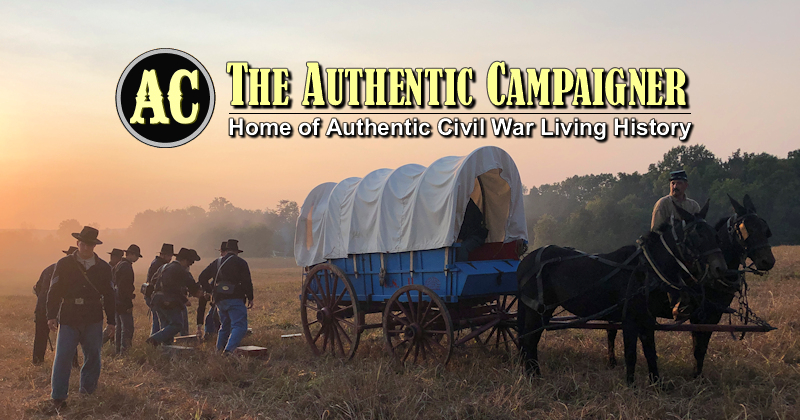It seems to me that reenactors know as much as anybody about the details of history and don't bring a hidden agenda like so many antique dealers and academics. For that reason to get some good direction on a question I had on Civil War Enfields, I thought this would be a good place to go.
I had one ancestor on my father’s side of the family that served with the 29th Indiana and another ancestor on my mother’s side of the family that served with the 60th Indiana. Unfortunately, any weapons that either carried into battle were long ago lost to the family. I have been seeking for some time to purchase a genuine Civil War rifle that was as similar as possible to what my ancestors carried into battle at Shiloh and Vicksburg, respectively. My research has indicated that both of my ancestors’ regiments carried Pattern 1853 Enfields as their primary weapon. My research has further shown that the agent for the State of Indiana, Robert Dale Owen, purchased 40,000 Enfields from June 1861-Feb. 1863 for the state from Schuyler, Hartley, & Graham in New York and Samuel Buckley & Co., one of the founding members of B.S.A.
To get an Enfield that would be representative of what my ancestors carried into battle, I have been seeking a P1853 Enfield with the “Tower 1861” or “Tower 1862” markings on the lock plate and either the Schuyler, Hartley, & Graham or B.S.A.T. markings. With the Union importing over 500,000 Enfields, I would not have thought finding such a rifle would turn out to be as difficult a challenge as it has. Even though the Union imported more Enfields than the Confederacy, it seems that the great majority of the Enfields I come across today are offered with some sort of claim that they were likely Confederate owned. I suppose that is more a testament to the greed and lack of integrity of many dealers than representative of the true history of those weapons.
I have come across some Enfields with the Crown over S H / G # stamp on the wood stock, with the # being a 1, 3, 5, etc. Some dealers claim these marks are definitive proof of importation by Sinclair Hamilton and Confederate use. (Please see College Hill Arsenal -- https://www.collegehillarsenal.com/s...?productid=997 and Battle of Chicamauga.com: http://battleofchickamauga.com/index...roducts_id=192 ). I have seen others say that the S H / G # stamp is a marking by Schuyler, Hartley, & Graham. (Please see http://www.antiquearmsinc.com/tower-...aham-union.htm )
Would you be able to provide me some guidance that can clear up this controversy?
Best Regards,
Matt Striebel
I had one ancestor on my father’s side of the family that served with the 29th Indiana and another ancestor on my mother’s side of the family that served with the 60th Indiana. Unfortunately, any weapons that either carried into battle were long ago lost to the family. I have been seeking for some time to purchase a genuine Civil War rifle that was as similar as possible to what my ancestors carried into battle at Shiloh and Vicksburg, respectively. My research has indicated that both of my ancestors’ regiments carried Pattern 1853 Enfields as their primary weapon. My research has further shown that the agent for the State of Indiana, Robert Dale Owen, purchased 40,000 Enfields from June 1861-Feb. 1863 for the state from Schuyler, Hartley, & Graham in New York and Samuel Buckley & Co., one of the founding members of B.S.A.
To get an Enfield that would be representative of what my ancestors carried into battle, I have been seeking a P1853 Enfield with the “Tower 1861” or “Tower 1862” markings on the lock plate and either the Schuyler, Hartley, & Graham or B.S.A.T. markings. With the Union importing over 500,000 Enfields, I would not have thought finding such a rifle would turn out to be as difficult a challenge as it has. Even though the Union imported more Enfields than the Confederacy, it seems that the great majority of the Enfields I come across today are offered with some sort of claim that they were likely Confederate owned. I suppose that is more a testament to the greed and lack of integrity of many dealers than representative of the true history of those weapons.
I have come across some Enfields with the Crown over S H / G # stamp on the wood stock, with the # being a 1, 3, 5, etc. Some dealers claim these marks are definitive proof of importation by Sinclair Hamilton and Confederate use. (Please see College Hill Arsenal -- https://www.collegehillarsenal.com/s...?productid=997 and Battle of Chicamauga.com: http://battleofchickamauga.com/index...roducts_id=192 ). I have seen others say that the S H / G # stamp is a marking by Schuyler, Hartley, & Graham. (Please see http://www.antiquearmsinc.com/tower-...aham-union.htm )
Would you be able to provide me some guidance that can clear up this controversy?
Best Regards,
Matt Striebel



Comment